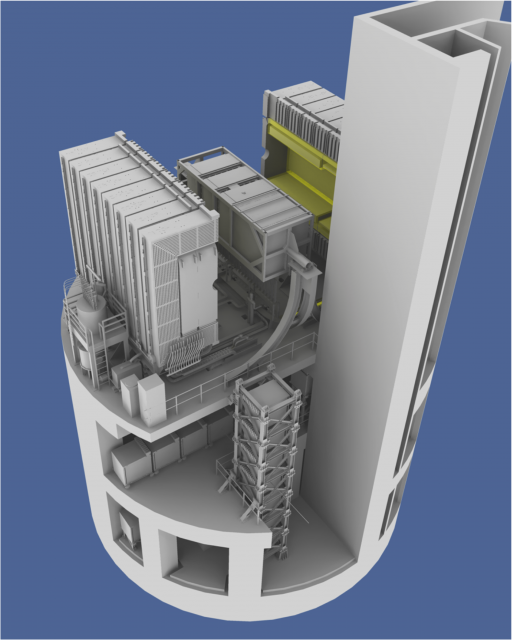Diagram showing the experimental set-up of T2K
WHAT ARE THE AIMS OF THE EXPERIMENT?
T2K has a wide variety of goals, including:
• To observe electron neutrino appearance in a muon neutrino beam
• To measure the value of the 3rd mixing angle
• To precisely measure oscillation parameters in muon neutrino disappearance
• To search for sterile components in muon neutrino disappearance
• To measure neutrino-nucleus cross-section values to a greater degree of precision
HOW DOES T2K WORK?
A beam of neutrinos is generated at the Japan Proton Accelerator Research Complex (J-PARC) on the East coast of Japan, before arriving across the country at the Super-Kamiokande (Super-K) neutrino detector in the Western Japanese mountains. The spectrum and composition of the neutrino beam are measured before it leaves J-Parc, using the near detector ND280, and is then measured again at Super-K, a very large water Cherenkov detector. The observed change in spectrum and composition is then used to discover the properties of the neutrinos.
Approximately 40 m tall and 40 m in diameter, the Cherenkov detector lies underneath 1000 m of mountain rock (just under twice the height of the Empire State Building). It uses photomultiplier tubes (PMTs) to observe rings of light emitted through the Cherenkov effect by charged particles moving in ultrapure water. This high level of purity allows light to travel almost unimpeded.
While Super-K has been acting as a T2K Far detector since 2010, it is an important experiment in its own right that has been running for over 20 years. It makes many other measurements, including those of solar and cosmic ray neutrinos.
PPD CONTRIBUTIONS
DATA ACQUISITION
PPD has played a key role in operating, maintaining and upgrading the T2K ND280 Data Acquisition (DAQ) system and electronics, drawing on the wide expertise in the department. These systems allow T2K to take high-quality data used both to analyse neutrino oscillations and to measure neutrino interaction cross-sections. Recently, PPD has been closely involved in the ND280 detector upgrade in 2023 by helping update components of the DAQ, including elements of the software, and by helping to restart the ND280 detector after a long period of downtime.
We provide the primary tape archive for the T2K near detector data, accessed nationally and internationally and are one of two Tier-1 sites of T2K (the other is in Canada). We oversee the distribution of T2K data, making sure that it is available for processing and backed up at the designated Tier-1 sites. In addition, we provide a Tier-2 site with disk storage and computing resources and we are also currently working with PPD computing to streamline the storage and processes involved for the future.

Another key area of our research involves the measurement of neutrino cross-sections. PPD is currently working on a new cross-section measurement, looking at the visible energy observed in the ND280 detector and developing more refined methods of energy estimation. Energy deposits from low momentum (under 450 MeV/c) protons can help in constraining one of the dominant sources of systematic uncertainty for measurements of oscillation parameters at T2K. These low-momentum protons have never been measured at T2K.
Alongside this work, we assist in T2K neutrino beam flux research, using our expertise in neutrino beam systematics. In addition, in collaboration with Lancaster University, we have developed a new form of photon analysis to identify photon events in the ND280 detector. This is a new channel that is being opened for future T2K measurements.

The worldwide team of researchers involved in the T2K collaboration, 2019.
Photo: the T2K experiment, http://t2k-experiment.org
As well as supporting T2K, we are also involved in the construction of Hyper-Kamiokande (Hyper-K), a next-generation underground water Cherenkov detector based on Super-K. You can find out more about our role in the project here.
